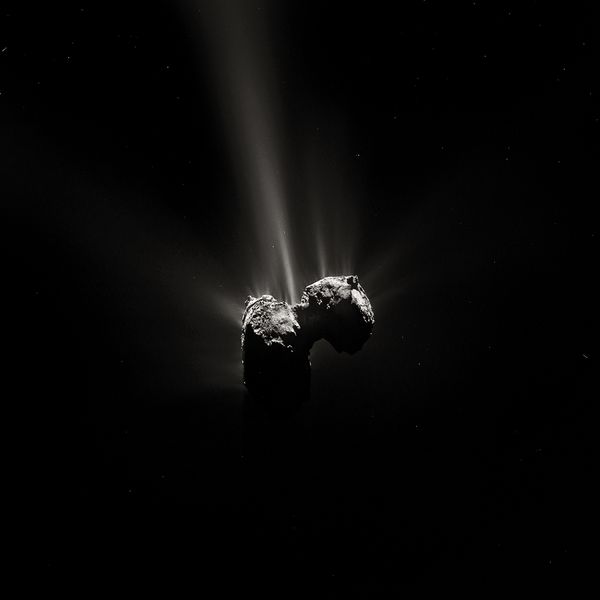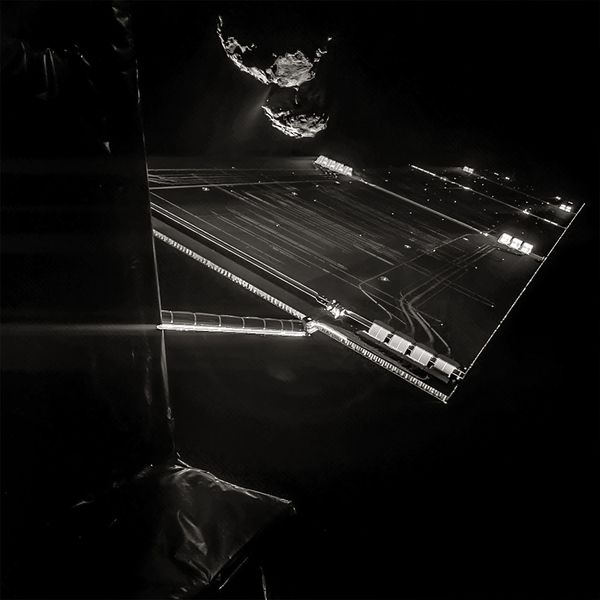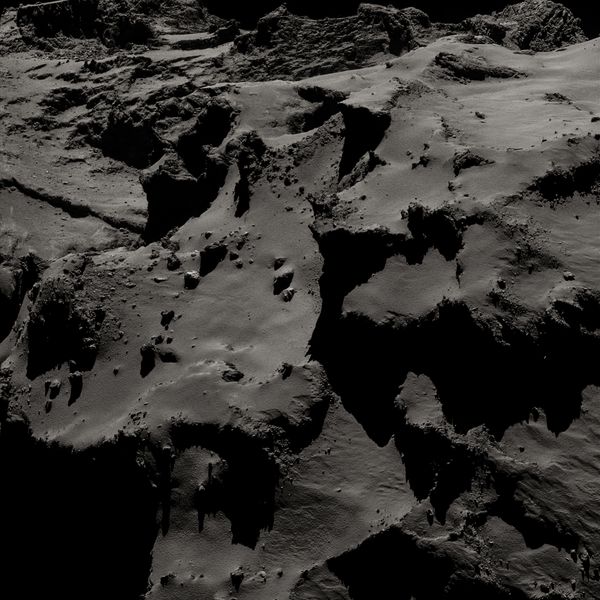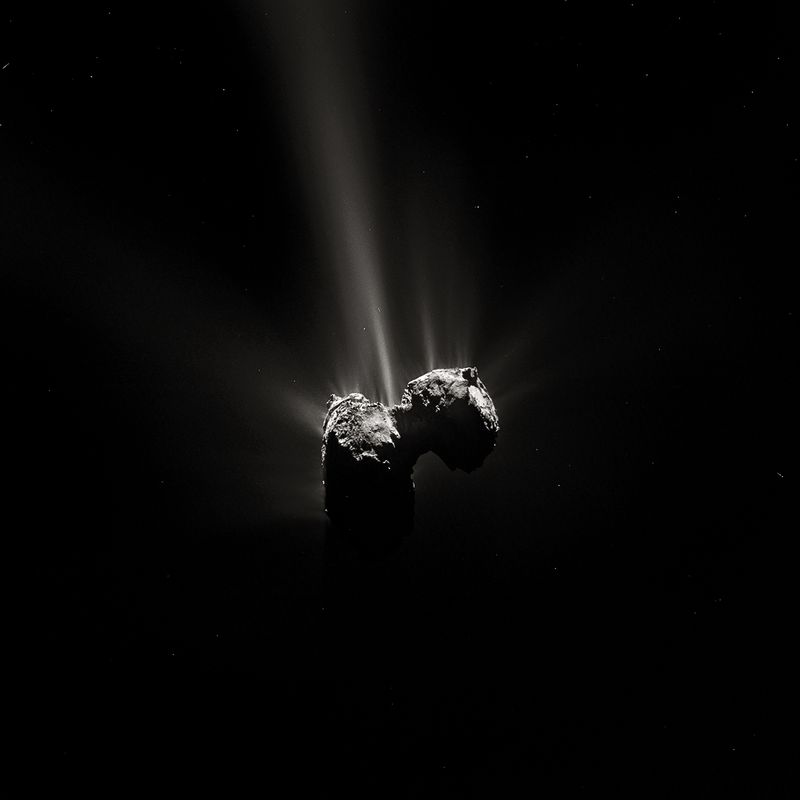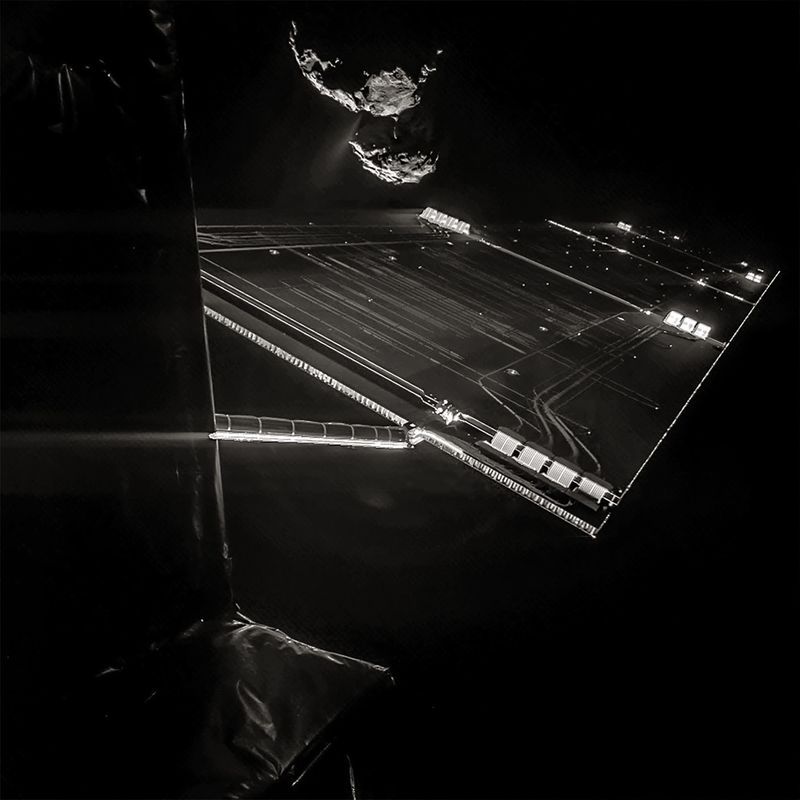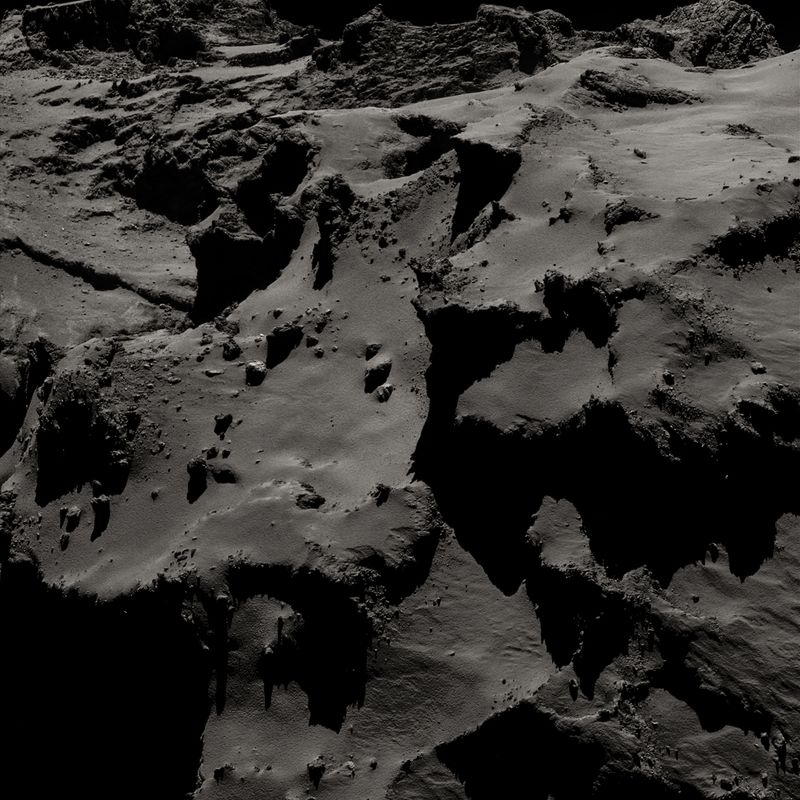Photographs from Rosetta’s 10-Year Journey through Deep Space
-
Published18 Apr 2019
-
Author
Taking us into the outer solar system onboard The European Space Agency's Rosetta spacecraft, a new publication by Xavier Barral reveals the incredible story of how mankind made contact with a Jupiter-family comet.
Taking us into the outer solar system onboard The European Space Agency's Rosetta spacecraft, a new publication by Xavier Barral reveals the incredible story of how mankind made contact with a Jupiter-family comet.
Comet, Photographs from the Rosetta Space Probe, recently published by Xavier Barral, retraces a journey that a non-physicist will perceive as both scientific and philosophical. It’s an outstanding mission more than half a billion kilometres away from Earth to meet with one of the oldest solar objects – “not a dead star, a star never born”, a caption reads. It’s the story of mankind’s longing for answers about the origin of life.
Throughout the past centuries, we have depended on photography to understand our world – explorers were sent to freshly conquer lands to document an emperor’s expanding territory; photojournalists travelled to foreign countries to report on different cultures; and telescopes, microscopes and other X-rays helped visualise the otherwise invisible. Photography has played a critical role in building human knowledge, shaping the way we look at the world.
It’s photography, again, served with technology that has enabled our discovery of a piece of amalgamated dust more than 4.5 billion years old – the comet Tchoury (67P/Churyumov–Gerasimenko). And by doing so, it fulfilled a constant desire to expand the boundaries of the known world – both geographically and historically. Or is it a desire to conquer it? In one photograph, the metal arm of Philae appears, the robotic probe that landed on Tchoury - it is a technological selfie remindful of our propensity to explore.
The book unravels the journey, passing Earth, the Moon, Mars, Lutetia, Saturn and soon reaching the dark abysses of deep space to find a 5 km-long comet. And when it appears from a close distance, the comet revealingly looks like a foetus, as to illustrate our search for life in some other place, time or form.
The proportions are vertiginous, and the provided information requires a complete erasure of terrestrial references. What looks like frost is dust; what seems to have been provoked by tectonic activity was born from a gravity 1/100 000 that of Earth; “a 700-meter cliff has the fragile consistency of a cigarette ash”. “Just as eccentric as its trajectory, the cometary celestial phenomenon is an extravagance in itself”, German director, Hanns Zischler, writes at the end of the book.
Going through the book is an invitation to contemplate the sublime and deconstruct preconceptions. What photography can’t reveal – the lack of gravity, the distance from Earth, the organic constitution of the matter - preserve its power of illusion. It offers to look at “the infra-visible”. And with this, it unleashes the imagination.
--------------
La Comete, Le Voyage de Rosetta (Comet, Photographs from the Rosetta Space Probe) by The European Space Agency
Published by Xavier Barral
Texts by Jean-Pierre Bibring, astrophysician, responsible of Rosetta’s lander and Hanns Zischler, author and filmmaker
Hardcover // 216 pages // 150 Black and White Photographs // 25 x 27 cm // €55
--------------
Laurence Cornet is a writer and curator based in Brooklyn focusing on cultural and environmental issues.
